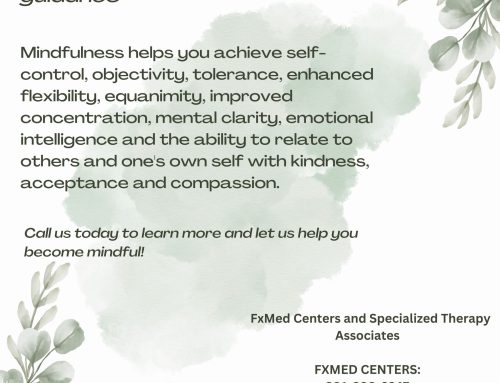When you experience anger, you get a surge of adrenaline which is reflected in your body: your heart races, your body tenses, your breathing becomes shallow, your face flushes, you sweat and you may even feel nausea. Reducing these sensations by slowing and deepening your breathing, reducing muscle tension, lowering your heart rate and cooling down your body will help you regulate your anger. Dialectical Behavioral Therapy (DBT) incorporates various strategies to promote this type of soothing response. Some examples are listed below with instructions on how to practice the skill:
Deep Breathing:
1. Find a comfortable, quiet place to sit where you won’t be distracted.
2. Put the palm of one hand on your stomach and the palm of the other on your chest.
3. Breathe in and out as you normally do. Which hand moves the most when you breathe? If the hand on your chest moves and the one on your stomach doesn’t, this indicates that you are not breathing from your diaphragm.
4. To correct this, deliberately push your stomach out when you breathe and let your stomach fall when you breathe out.
5. Continue to breathe in and out. Try to lengthen your breaths. Slowly count to five as you breathe in and again as you breathe out. Breathing in through your nose and out through your mouth may help in taking deeper breaths.
6. Practice this exercise a couple of times a week. The more you practice the more it will become a habit.
Breathing slower is a skill that is easier to use in the moment. All this skill requires is breathing out more slowly than you breathe in and gradually increasing your exhalation.
Progressive Muscle Relaxation (PMR):
The goal of this exercise is to relax your muscles which is going to be helpful in reducing the muscle tension that accompanies anger
1. Find a comfortable, quiet place to sit where nobody can distract you.
2. Bring your full attention to your forearms. Make fists with your hands and squeeze to about 75 to 80% of your maximum strength and then hold them at this level of tension for about five to ten seconds.
3. Release your fists and relax your muscles. Notice the difference between how they felt when they were tense as to how they feel now. Notice the sensations of warmth and relaxation. Repeat this exercise at least one more time before moving on to another muscle group.
4. Focus your attention on another area of your body. If you bring your attention to your lower legs, clench your calf muscles tightly. Hold this tension for five to ten seconds and then relax your calf muscles. Repeat this process again and notice any differences in the sensations between tense and relaxed muscles.
5. Continue going through different muscle groups in your body. Each time, tense your muscles to about 75 to 80% of your maximum strength, hold for about five to ten seconds, and then relax your muscles, focusing on the differences in how they feel.
Self-soothing skills are taught in the DBT group provided at Specialized Therapy Associates. Should you have any interest in this group, please call 201-488-6678 for details.



